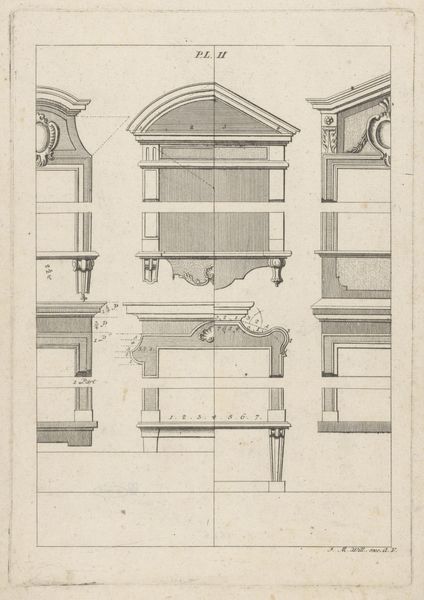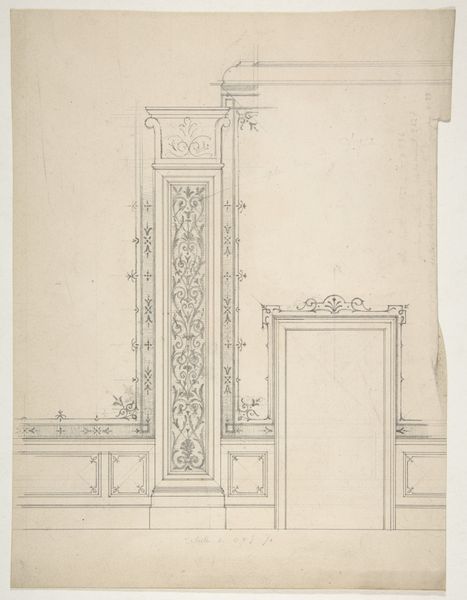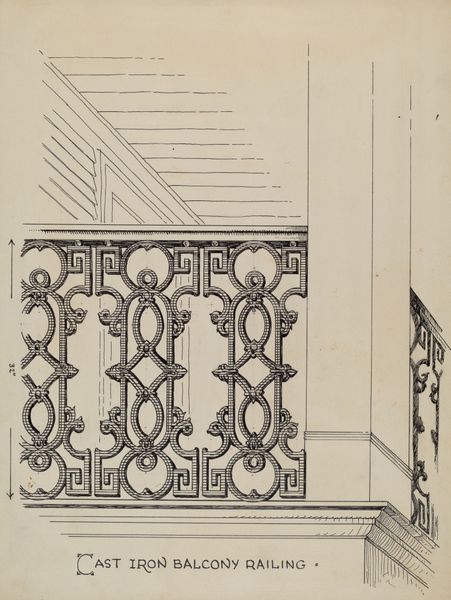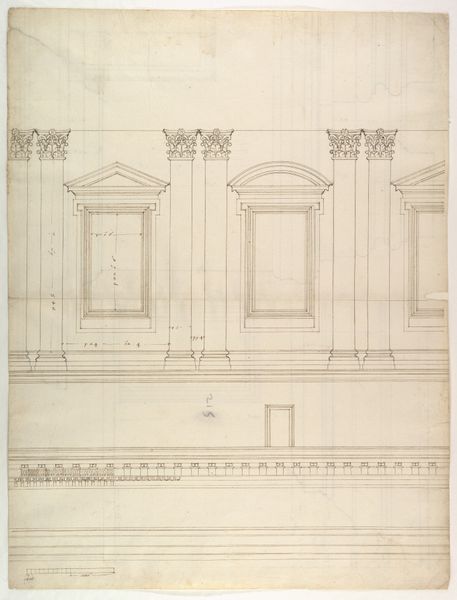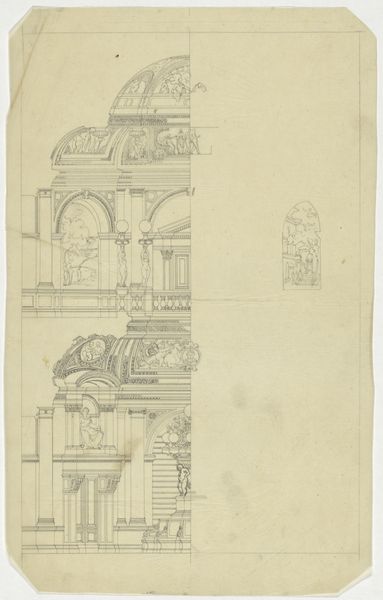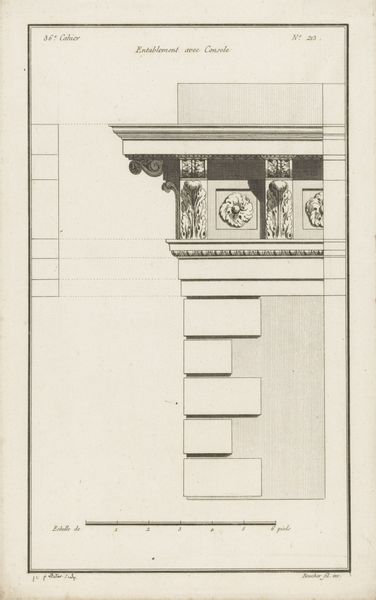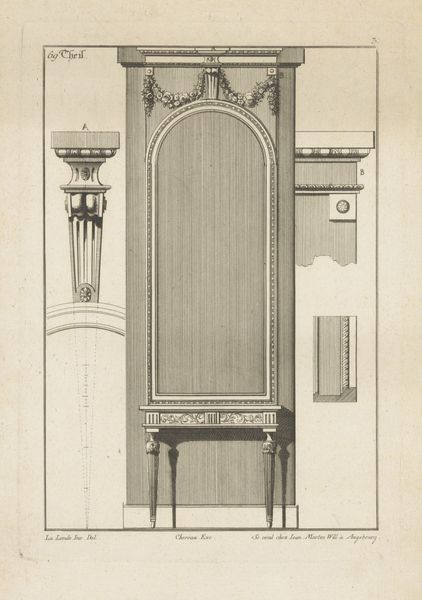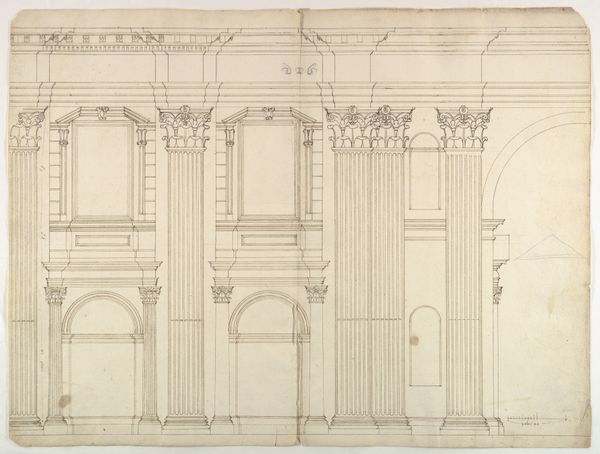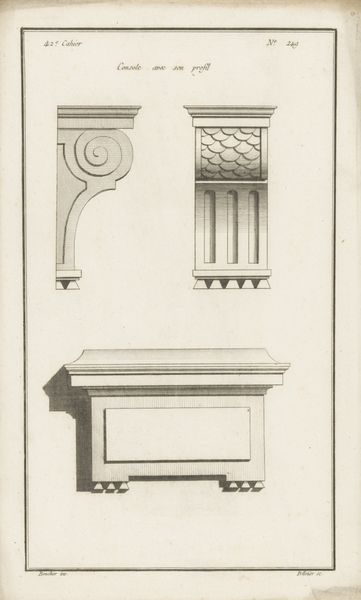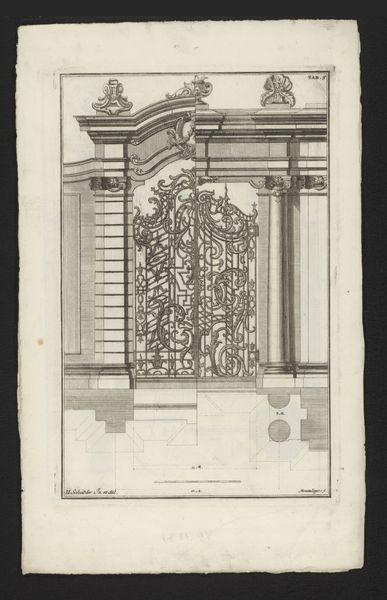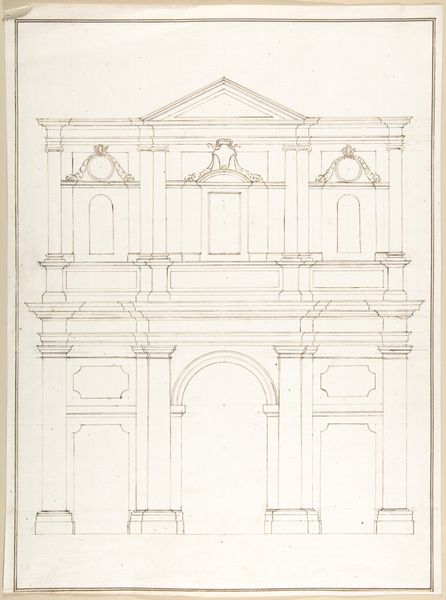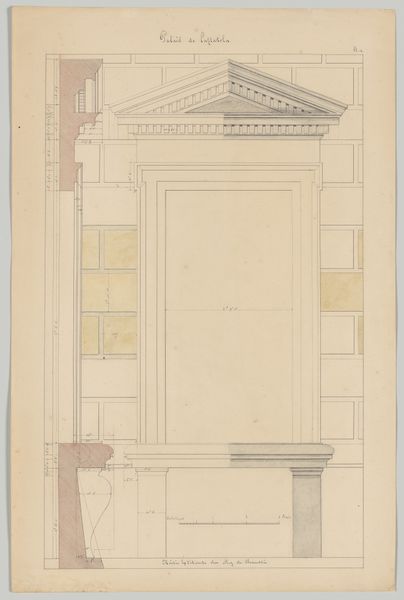
Design for a Stage Set at the Opéra, Paris 1830 - 1890
0:00
0:00
drawing, print, pencil, architecture
#
drawing
# print
#
pencil
#
line
#
cityscape
#
academic-art
#
watercolor
#
architecture
#
building
Dimensions: Irregular sheet: 9 5/8 x 3 7/16 in. (24.4 x 8.7 cm)
Copyright: Public Domain
Editor: Here we have Eugène Cicéri's "Design for a Stage Set at the Opéra, Paris," likely created between 1830 and 1890. It's a pencil and watercolor drawing. The detail is captivating! What stands out to you? Curator: The drawing, at its core, represents labor. Consider the layers: the physical work of the draftsman, Cicéri, painstakingly rendering architectural detail; the collective effort of constructing the sets based on this design; and the ultimate, ephemeral labor of the performers activating that space. This intersection of artistic labor with manual construction reflects the Opéra as a factory for spectacle. How does this idea change your perception of the work? Editor: I hadn't thought about the *making* of a spectacle before! It seems obvious now, but I was focused on the beauty of the design itself, not the work behind the scenes, constructing it and then dismantling it after its run. The pencil and watercolor, the print... those were just means to a much bigger process. Does the material of the drawing itself hold significance then? Curator: Absolutely. The very choice of pencil and watercolor, allows for relative speed and reproducibility. This connects to broader debates about the value of original versus mass-produced images that emerged during this period with new printmaking technologies. The drawing, therefore, becomes a kind of blueprint, subservient to the large project of theatrical production. We see in the object how "high art" enables and is supported by a larger, often unseen, network of laborers and materials. Editor: So, even the "finished" drawing isn't the final product. It's just one component in the entire theatrical production and the building and dismantling of the stage and scene for this performance. This perspective shifts everything for me. It highlights the immense coordination required, and art's embeddedness in social structures. Thanks for expanding my view. Curator: Precisely! Recognizing the interconnectedness of materials, labor, and context transforms our understanding of the work's artistic value beyond mere aesthetics. We have extracted so much more, simply by discussing the *how* it was created.
Comments
No comments
Be the first to comment and join the conversation on the ultimate creative platform.

